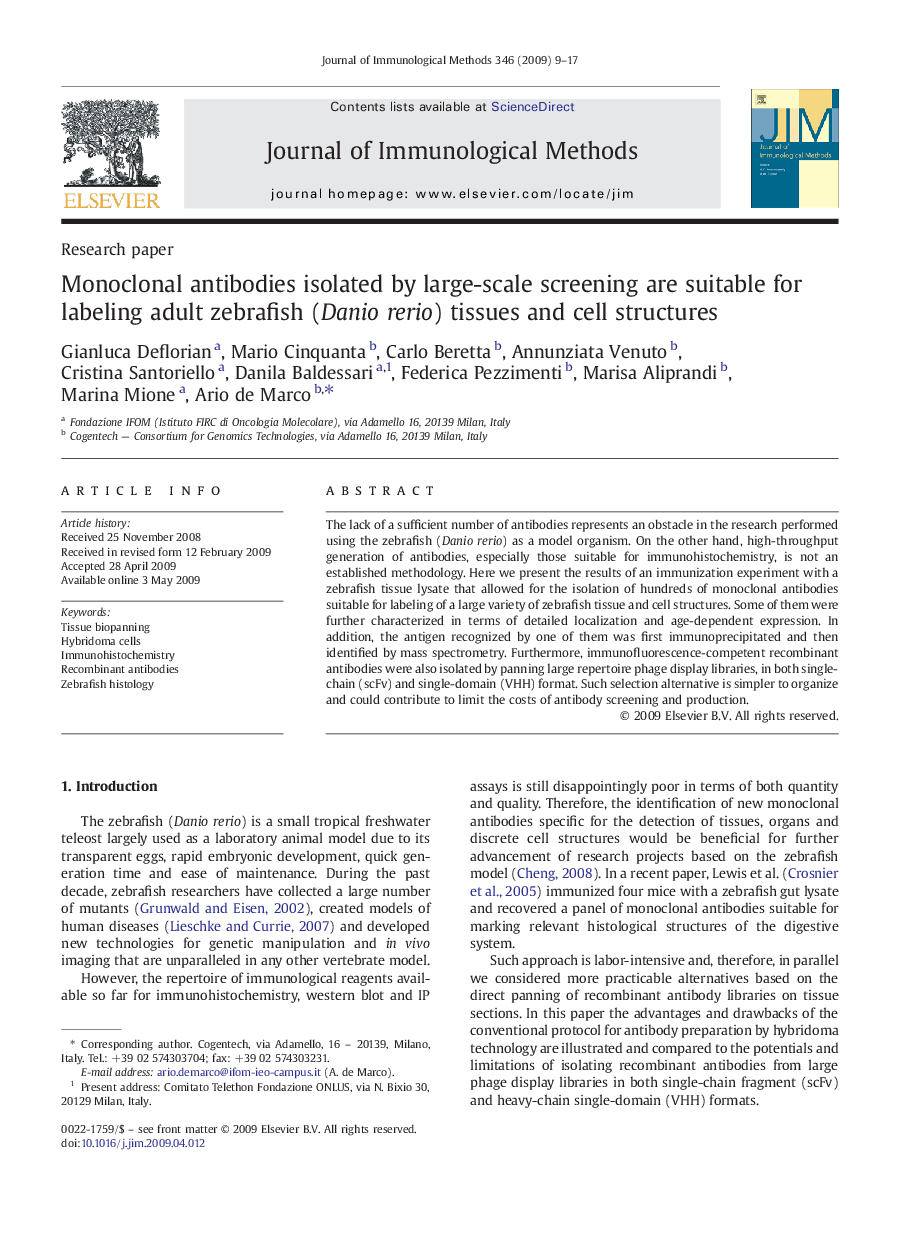| Article ID | Journal | Published Year | Pages | File Type |
|---|---|---|---|---|
| 2088803 | Journal of Immunological Methods | 2009 | 9 Pages |
The lack of a sufficient number of antibodies represents an obstacle in the research performed using the zebrafish (Danio rerio) as a model organism. On the other hand, high-throughput generation of antibodies, especially those suitable for immunohistochemistry, is not an established methodology. Here we present the results of an immunization experiment with a zebrafish tissue lysate that allowed for the isolation of hundreds of monoclonal antibodies suitable for labeling of a large variety of zebrafish tissue and cell structures. Some of them were further characterized in terms of detailed localization and age-dependent expression. In addition, the antigen recognized by one of them was first immunoprecipitated and then identified by mass spectrometry. Furthermore, immunofluorescence-competent recombinant antibodies were also isolated by panning large repertoire phage display libraries, in both single-chain (scFv) and single-domain (VHH) format. Such selection alternative is simpler to organize and could contribute to limit the costs of antibody screening and production.
